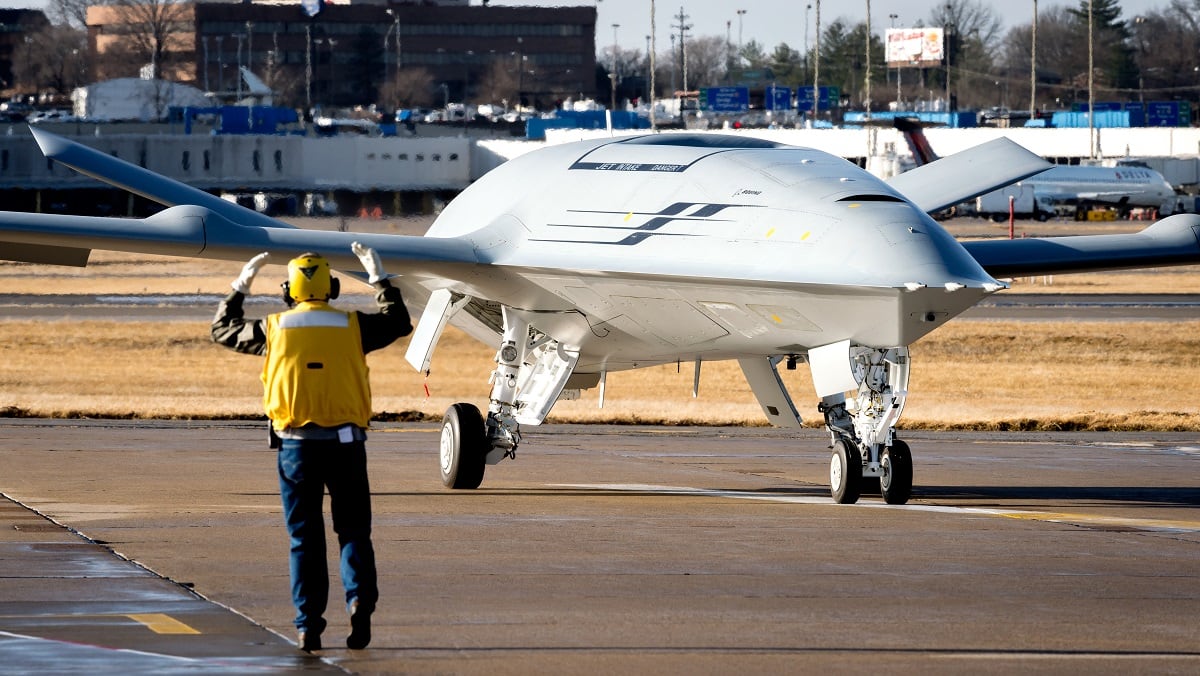WASHINGTON — The U.S. Navy’s MQ-25 Stingray refueling drone, destined to be the first carrier-launched autonomous unmanned aircraft integrated into the service’s strike arm, took its first test flight from MidAmerica Airport in Illinois, Boeing announced Thursday.
The two-hour flight, remotely controlled by Boeing pilots, tested the basic flight functions of the aircraft, a Boeing statement said.
“The aircraft completed an autonomous taxi and takeoff and then flew a pre-determined route to validate the aircraft’s basic flight functions and operations with the ground control station,” the release said.
RELATED

Boeing’s project head said it was an important step toward getting the drone on the flight deck.
“Seeing MQ-25 in the sky is a testament to our Boeing and Navy team working the technology, systems and processes that are helping get MQ-25 to the carrier,” MQ-25 Program Director Dave Bujold said in the release. “This aircraft and its flight test program ensures we’re delivering the MQ-25 to the carrier fleet with the safety, reliability and capability the U.S. Navy needs to conduct its vital mission.”
An $805 million contract awarded to Boeing last August covers the design, development, fabrication, test and delivery of four Stingray aircraft, a program the service expects will cost about $13 billion overall for 72 aircraft, said Navy acquisition boss James Geurts.
The award to Boeing kicks off what the Navy would is aiming to be a six-year development effort moving toward a 2024 declaration of initial operational capability. At the end, it will mark a historic integration of drones into the Navy’s carrier air wing.
The MQ-25 flown Thursday is a Boeing-owned test asset and a predecessor to the first four engineering design model aircraft provided for under last year’s contract. The model “is being used for early learning and discovery to meet the goals of the U.S. Navy’s accelerated acquisition program,” the release said.
The Stingray was a priority pushed by the Navy’s previous chief of naval operations, Adm. John Richardson, who saw it as a chance to force a program through the system and field a new capability quickly.
“The MQ-25 was really a signature program to test the limits and plow new ground in that direction,” Richardson told Defense News last April. "And so we brought industry in way earlier. I think that’s key to getting the acquisition cycle faster, even in the refinement of the requirements phase.
“And so that’s where we’ve been with MQ-25, is to bring them in, see what they’ve got and see how fast they can get a prototype together to fly. One thing we did do was we locked down on requirements. We could probably get agreement from everybody that we need something to tank. It liberates a lot of our strike fighters from doing that mission and it’s something that we can get done ― its relatively straightforward.”
David B. Larter was the naval warfare reporter for Defense News.








